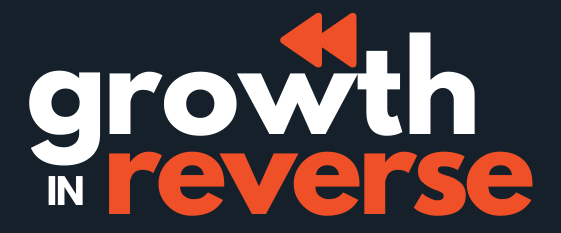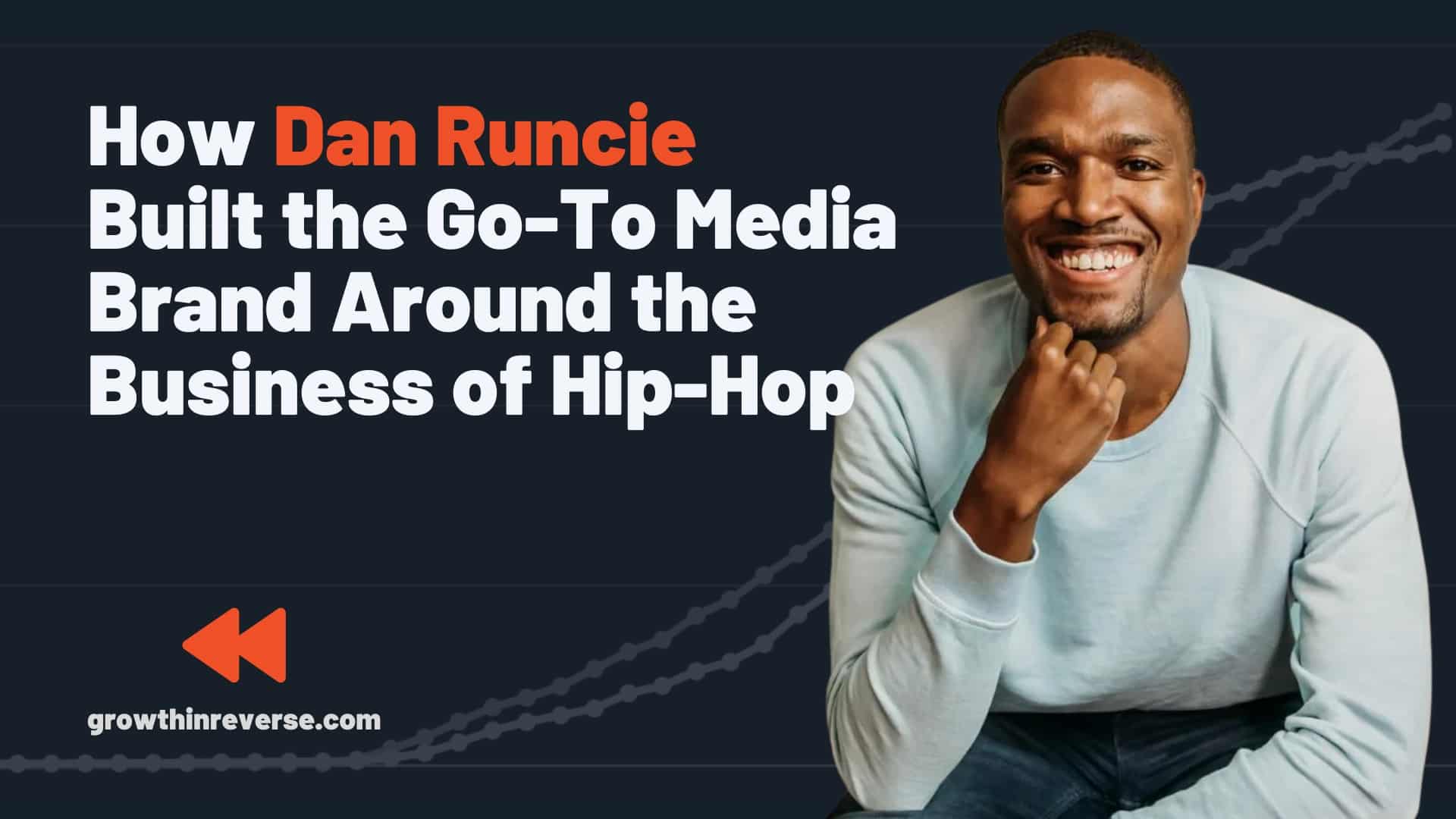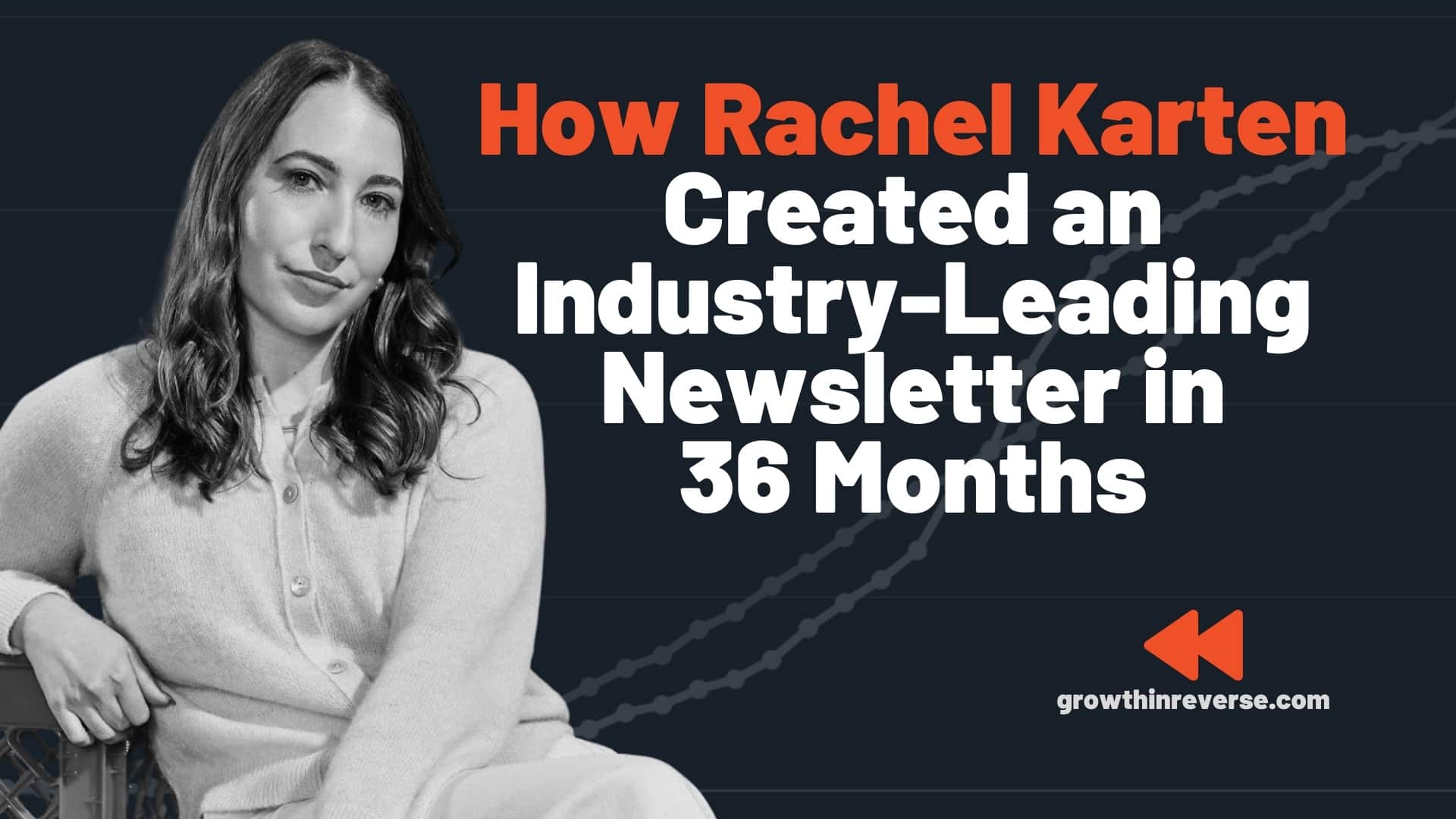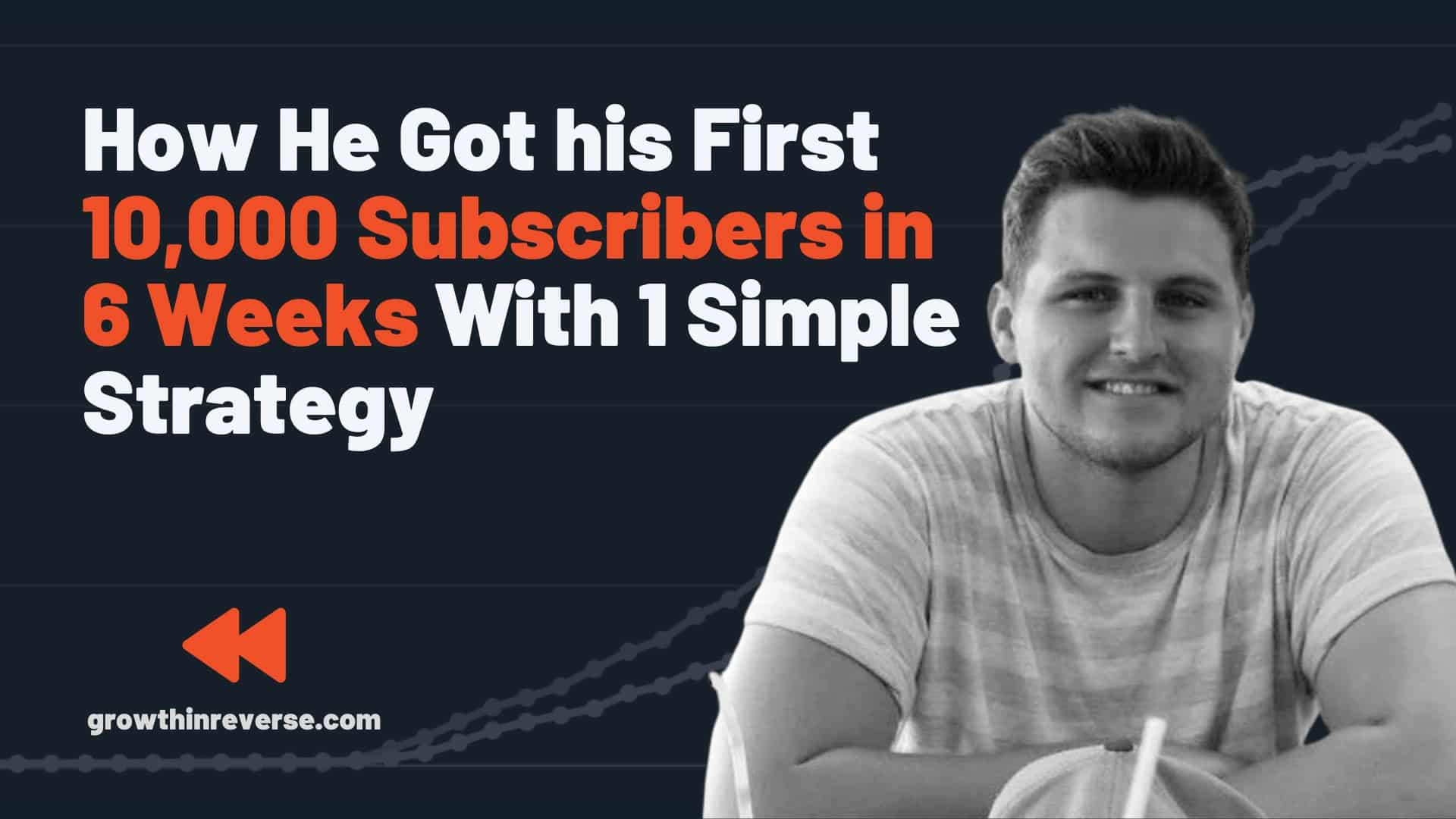Alex Garcia has been able to grow his one newsletter into a 7-figure media company in around 3 years.
He started the Marketing Examined newsletter in November 2020 and now has over 200k subscribers across 5 different newsletters.

The Growth Timeline
Let’s look at the growth timeline before diving into the strategies he used to grow his newsletter.

Alex worked at The Hustle until it was acquired by Hubspot in 2021.
Around 2 months before he left the company, he realized he needed to build his personal brand so he could grow a newsletter and implement some of what he learned while working there.
He had been working with Trung Phan and I have to imagine if seeing some of his growth was the impetus to choose Twitter as his platform of choice.
How Alex Makes Money
There are a few ways Alex makes money, and these have changed slightly over the years.
Sponsorships
Alex has a few different ways to make money from sponsorships. He does have a main sponsored section in his emails.
I couldn’t find pricing on how much he charges, but he told Pat Walls from Starter Story that he makes between $65-$75k per month from sponsorships alone.
And that was when he was at 150k subscribers. Now he’s over 200k, so I have to imagine he’s pushing closer to $80-$90k per month at this point.
Growth Marketing Examined
Alex launched a paid version of his newsletter in 2021, called Growth Marketing Examined.

It was $297 a year from what I found, and I think he did raise the price before eventually shutting it down in 2023.
Cut30
Alex and his two friends, Oren John and Colin Landforce, created a cohort-based course all about short-form videos.
It’s priced at $497 and includes workshops, how-to videos, and their exact tool stacks. It’s kind of like Ship 30 for 30 but for short-form videos.
The Growth Levers of Alex Garcia
There are a number of growth levers Alex has used, and it was quite challenging to choose a few because he is a marketer so he’s tried a lot.
🧵 1. 50 threads in 50 days. The first thing he tried, and the one that got him to almost 9,000 subscribers in less than 2 months.
🧪 2. Experimentation. Alex experiments with all kinds of pieces related to his content and newsletter. Can’t wait to show you these and get some ideas spinning for you!
🍗 3. Buffet marketing. He thinks of his marketing strategies like a buffet-style restaurant. Cast a wide net and then double down on what’s “good.””
🍿 4. Snackable vs entrees. So many food puns! Alex breaks his content down into these two styles that make it easy for the reader to stay in his ecosystem.
🤓 5. Always be learning. The strategic nature in which he consumes and saves content is really interesting. One of my big takeaways from this deep dive.
📆 6. The more tactical stuff. This section includes some of the more tactical things he’s done, vs the high-level strategies.
Alright, let’s dive into each of these and see how he used them to grow his newsletter.
1. 50 Threads in 50 Days 🧵
One of the first things Alex did to grow his audience worked really well.
He knew that he needed to build an audience on social, and had seen others using Twitter threads to grow quickly.
Because Twitter was Threads would allow him to speed up the growth process and build some momentum, but he had to be smart about it.
He decided he was going to write 50 Twitter threads over 50 days to jumpstart his audience growth.
The results?
Alex went from 500 followers to 40k followers in that time frame. On average, that’s almost 800 followers per day!

The funniest part was that he didn’t set out to grow his newsletter this way. He didn’t have a landing page set up for people to join the email list until day 2 or 3 of this experiment.
And yet, his newsletter went from 2,000 to over 9,000 subscribers by the end of the challenge.
The Challenge
Alex didn’t want to just put out any kind of content, he wanted to build a relevant audience that would be interested in the stuff he shared in his newsletter.
This was a super smart move on his part, as we see a lot of people growing super fast but their audience isn’t as dialed in.
His 2 main constraints for this challenge were:
- It had to be a longer form piece that worked as a Twitter thread
- The topic had to be about growth marketing
Once the 50 days were over, he could decide to keep going or slow the pace a little and focus on creating awesome newsletter content as well.
This strategy worked. And from what I can see, helped him do quite a few things:
- Force himself to learn about the industry and find interesting insights to share
- Improve hist writing skills
- Learn what content resonates with the audience he was building
The one thing Alex said he would have changed? He wished he had spent more time on the weekends creating threads so he wasn’t starting from a blank page every morning.
Either way, the consistency paid off.
The day after the challenge ended, he created a thread of those threads:

This is something we’ve seen Sahil Bloom do as well. It gives you a way to “save” similar content together and has the added benefit of counting as a post for the day, so you can take a little break.
He still has this thread of threads pinned to the top of his Twitter profile.
2. Experimentation 🧪
After the challenge, Alex turned more of his attention to finding content market fit with the format of his newsletter.
In the beginning, while he was doing his 50 threads challenge, he was sending this as a daily newsletter.

My guess is he was repurposing the thread and sending it as a more cohesive post, meaning it wasn’t much of a heavy lift.
But over time he started experimenting with different types of content.
He had two types of emails he would send out to his list each week.
5-Tactic Tuesday
He sent 5 Tactic Tuesday emails, where he would take a topic and send 5 ideas around it.
For example, take copywriting. He would send 5 tactics you could use to improve your copywriting.
Alex said these did well, but not quite as well as what he would send on Thursdays.
Thursday Teardowns
On Thursday, he sent out teardowns of a marketing campaign.
This might be a mini deep dive on a tactic or strategy a brand used.
He would essentially create a longer form piece of content diving into that idea and how you could do something similar.
Eventually, he decided to get rid of the Tuesday email and focus more on Thursdays.
Here are the reasons he came to that decision:
- 5 Tactic Tuesday had a higher unsubscribe rate
- The Thursday teardowns got a higher open rate
- The Thursday teardowns got more replies
That last point is the most important in my opinion. When people take the time to reply to an email you’ve sent, pay attention.
This is one of the highest forms of signal a newsletter creator will get. It shows you that you’ve hit a nerve, and the content is likely much more valuable or relatable than other emails you’ve sent.
“It wasn’t that 5 Tactic Tuesday wasn’t good, it just wasn’t great. And I’d rather have something great in your inbox because that’s going to make you want to open the next email.”
Alex Garcia
Other Content
He’s also tried out the “Sunday Study” format where once a month he’ll send a Sunday email.

This was one he sent out in February 2023.
Landing Page Tests
Alex has also taken a page from Dru Riley’s book and tested lots of landing pages.


And even between August and December, he was testing out a different layout for the menu at the top.

Testing Subject Lines
Alex laid out his testing method for subject lines on the Hypefury podcast.
He says that he creates 4 different segments of his audience based on their engagement levels.
He’ll test out the new type of content with the least engaged audience first, and if he gets engagement from those people, he’ll test with the next more engaged audience.
The key here is that you’re not testing these on your cold subscribers who never open or engage. I don’t think that’s going to help you get enough data back.
But if you test it on people who engage with 25% of your emails, that’s something to pay attention to. Then you can send it to people who engage with 50% of your emails, and so on.
I’m not sure if this is the best way to go about this, but it’s a strategy you can try.
Testing His “From” Name
One of the other interesting things he tested was his “from” name. In every email provider you can determine how you want your name to show up in people’s inboxes.
Here are a few times Alex tested this:

He has been sending from “Alex Garcia” for a long time, and then he tried “Alex G.” 30 days later he tried “[email protected].”
That second one probably didn’t work because it gets cut off in the inbox.
Either way, he was trying out new things to see if it helped improve open rates.
3. Buffet Marketing 🍗
Alex likes to think of his marketing in terms of a buffet.
In the beginning, you get a bunch of plates, and try everything that looks even mildly interesting. It might look a little crazy, but you’re experimenting and trying lots of things.
When you go back for seconds, you’re only getting what was really good.
To translate this into marketing, try a bunch of stuff up front. This could be different types of content you’re posting or a few different platforms.
Look for the things that got you “10x results” as he says. What is giving you outsized returns on your time?
Once you have some data, go back and focus only on what was working and got the results you’re looking for.
4. Snackable Content vs Entrees 🍿
If you couldn’t tell, Alex loves food analogies.
While he was just writing threads for a long time, Alex realized that posting a ton wasn’t the best use of his time anymore.
He needed to be more strategic to grow his newsletter and media company.
Now he takes an approach he calls snackable vs entree content.
Snackable Content
The snackable content is like a teaser for the full article. These “snacks” are posted on platforms he doesn’t own, like Twitter or LinkedIn.
Entrees
This is the full article or case study he’s created. You want to keep some of this content only on your platform so that people will have to come to your website to read it, and will hopefully subscribe.
Turning Followers Into Newsletter Subscribers
Of course, you can’t just grow a following and hope that by osmosis those people also end up on your newsletter.
Alex was (and is) really diligent at making sure people know he has a newsletter.
At the end of every thread, he poses a question like this:

This helps turn those casual viewers into social media followers.
And then the next tweet looks like this:

He’s using a little social proof (subscriber count and open rate) to get you interested in joining the newsletter as well.
It’s changed slightly, but the format of those two tweets is similar to what he uses today.
And they appear at the end of every single thread he writes on Twitter.
If someone reads one thread, they might not subscribe. But if they see this again and again on everything you post, chances are they’re going to end up subscribing eventually.
Be consistent with your messaging.
5. Always Be Learning 🤓
To write 50 threads in 50 days, Alex needed to be consuming quite a bit of content to find insights people would find interesting.
Alex started making himself learn one new thing about marketing every day.
By setting his goal as learning one new thing or finding one new interesting idea, he’s constantly learning and improving his own strategies.
He started throwing his learnings into a Google Doc to keep track of them.
This means he’s sitting on a huge library of interesting ideas and tactics he’s come across that he can go back and reference for ideas.
He makes this available to his team now so they can start using some of what he’s collected over the years.
6. More Tactical Methods
Here are some of the more tactical things Alex has done to grow his newsletter.
Highly Unique Cross Promotions
I haven’t seen this one done that many times – or at least not by someone who talked about it afterward.
In June 2023, Alex put out a thread and article about how Pat Walls from Starter Story grew his email list.
A month later, Pat Walls published an interview with Alex on his YouTube Channel.
The video went live in July 2023 and got over 80k views.
Alex says this “swap” got him an additional 5-10k subscribers.

Can you imagine? A “typical” swap can get maybe a few hundred subscribers.
But something like this is so unique, and ended up benefiting both sides really well.
8. Unique Onboarding Flow
One of the things Alex does extremely well these days is the onboarding flow for a new user. Let’s break down each piece of this so you can get a better understanding of why I’m so excited about this one.
Thank You Page
Thank you pages for email newsletters are one of the most underutilized and an afterthought for many creators.
But Alex uses this real estate really well. Let’s break this down piece by piece.
Alex includes a very obvious progress bar that shows you the next steps in the process.
After that, he’s showing you a screenshot of other people replying and asks you to go reply to the email also.
This is kind of like a mix of social proof and the bandwagon effect subconsciously making you more likely to reply.

He also includes a link to Gmail because I signed up with a Gmail address.
At the top of this next screenshot, you can see him saying that you’ll help him sleep at night.
Then he goes into telling you what you’ll get as a subscriber. As well as a link to his Twitter account, and his CTO’s Twitter as well.

He also shares a silly story about how excited he is that you’ve subscribed. This shows a little of his personality, and keeps you engaged.
He then shares links to the top issues of the newsletter with images to make it more interactive:

He goes on to leave an image of himself (the same one he uses on social media of course) and signs off.

Yes, the components of the thank you page are similar to many other newsletters, but the execution is where this page shines.
The Welcome Email
Alex shows off his personality in the welcome email as well.

He’s repeating the same “favor” he asked on the thank you page of replying to the email.
He also links to his Twitter profile again, which reminds you who is sending this email (in case you’re seeing it hours later) but also has the added benefit of potentially getting you to follow and engage with his posts.

He then provides value, by telling you why he wants the reply and also sharing that using a consistent emoji helps people know it’s you n the inbox.
And he uses this opportunity to remind you what the emoji for this newsletter is.
Alex then gives you some fun insights about his life, making him more human and helping you relate to him.

Lastly, he reiterates how happy he is to have you on his email list and what to expect next – 5 of the most popular case studies he’s written.
But wait, the best part is that if you open those 5 emails, he sends you a gift.
This is brilliant, because if you can get someone to open your first 5 emails, you’re showing Gmail and other email providers that they want to get your content, and you’re more likely to hit their inbox in the future.
Not only that, but you’re creating a routine for them to read your emails in the future.
A Quick Note
There was way too much to cover, including his current strategy with short-form video, and paid acquisition he’s using now.
This was one of the more fun deep dives to research. If you have time, I’d recommend reading through Alex’s website as I’m sure you’ll find some extra gems in there.
How You Can Replicate Some of Alex’s Success
There are a number of ways you can take some of what Alex has done and repurpose it for yourself. Here are some I think are the more straightforward ones.
Try a Challenge
Writing 50 good Twitter threads in 50 days is not easy. But it can be very impactful and provide you with some momentum for your growth.
Make sure you’re creating content that is relevant to the audience you want to talk to.
Alex wrote about growth marketing, not about marketing a book, or finance for marketers – he was very specific on the types of people to target and the content he wanted to create.
The goal with a challenge like this isn’t to get the most followers – it’s to get the most relevant followers. People who would also like the content you’re sending out in your newsletter, or the services you sell.
Having 100k followers who don’t care about the topics you like to write about is a waste of time.
Tips for success:
- Make sure you’re creating content around a topic you want to keep writing about.
- Create a backlog of content so you’re not starting from zero every morning. If you recall, Austin Belcak created a library of 30-40 posts so he wasn’t on the hamster wheel every day. Even just 5-7 posts will help you not quit on days when you don’t feel super creative.
In my opinion, the key to this strategy is to be relevant to the platform you’re creating content on.
Threads might not be as effective anymore on Twitter, but maybe long posts are getting prioritized in the feed. Do that instead.
With LinkedIn, maybe it’s carousel posts. With TikTok, maybe it’s trending sounds. Whatever it is, do the thing that the platform is rewarding creators for doing.
Experiment With Everything
If Alex had just stuck with his initial idea of 5 Tactic Tuesday, he would never have grown his audience and email list to 200k subscribers.
Similarly, he now knows which title and headline work best on his website. Converting more of the visitors who come to your site into newsletter subscribers is the name of the game for growth.
Add Personality to Your Emails
Alex weaves personal insights into each email, including his welcome sequence.
This builds more trust and affinity with the audience and makes them feel like they know you.
Since people buy from people they know, like, and trust – this is a critical piece to any business.
You can weave your personality into the content in a few ways:
- Include your image at the bottom of the post
- Briefly talk about events that happened to you that week
- Include personal insights in the content you share (“That reminds me of this one time when I…”)
There are a ton of ways you can do this but in the age of people trying to grow anonymous accounts and hide who they really are, being a little vulnerable can make you stand out quite a bit.




